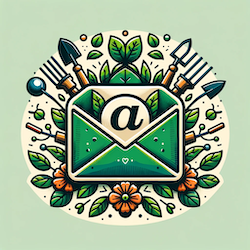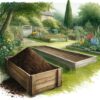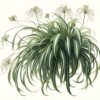Gardening Tools – The 20 Most Frequently Asked Questions with Answers
Gardening Tool FAQ
Welcome to our comprehensive guide on gardening tools, where we address the 20 most frequently asked questions that both budding and experienced gardeners often have. Gardening is an art that requires not just passion and patience but also the right set of tools. From selecting the essential tools to maintaining them and troubleshooting common issues, this post is designed to equip you with the knowledge you need to make your gardening experience more efficient and enjoyable. Whether you’re wondering about the difference between a spade and a shovel, looking for tips on sharpening your pruning shears, or needing advice on dealing with rusty tools, we’ve got you covered. So grab your gardening gloves, and let’s dig into these questions!
1.Essential Tools for Beginners
For those just starting their gardening journey, a few essential tools are indispensable. A sturdy hand trowel is perfect for planting, transplanting, and potting. Pair this with a good pair of gardening gloves to protect your hands. A pruning shears is a must-have for trimming and shaping plants. Don’t forget a watering can or hose for regular watering, and a garden fork or spade for turning soil. These tools offer a solid foundation for any beginner gardener.
2. Choosing the Right Tools for Your Specific Gardening Needs
Selecting the right tools depends on your garden’s size, type, and your physical capabilities. For small, container gardens, basic hand tools like trowels, pruners, and a watering can are sufficient. For larger gardens, consider long-handled tools like hoes, rakes, and a wheelbarrow for efficiency and to reduce strain. If you have physical limitations, ergonomic tools designed with softer grips and lighter materials can be extremely helpful.
3. Difference Between a Spade and a Shovel
Spades and shovels may look similar, but they serve different purposes.
Both spades and shovels are versatile tools for digging and moving soil, but they have distinct differences that make them better suited for certain tasks. Here’s a breakdown of their key features:
Both spades and shovels are versatile tools for digging and moving soil, but they have distinct differences that make them better suited for certain tasks. Here’s a breakdown of their key features:
Blade:
- Spade: Typically has a flat, rectangular blade with straight edges. This makes it ideal for cutting through tough, compacted soil or creating clean, straight-sided holes. Some spades have pointed tips for easier penetration, while others have squared-off ends for lifting sod.
- Shovel: Generally has a broader, curved blade with a rounded or pointed tip. This design allows for scooping and moving large amounts of loose material like dirt, compost, or gravel. Some shovels have angled blades for easier digging, while others have wider blades for heavier loads.
Angle:
- Spade: The blade is usually inline with the handle, giving it a more upright stance. This is helpful for precise cutting and edging and provides more leverage for pushing through tough soil.
- Shovel: The blade is often angled forward compared to the handle. This makes it easier to dig into loose soil and scoop up material efficiently.
Size:
- Spade: Typically smaller and lighter than shovels, making them easier to maneuver and less tiring to use for extended periods.
- Shovel: Can range in size from small handheld versions to large shovels for heavy-duty tasks.
Applications:
- Spade: Ideal for digging deep holes, breaking ground, edging lawns and beds, planting trees and shrubs, and cutting through roots.
- Shovel: Perfect for moving loose materials, leveling soil, filling trenches, mixing compost, and clearing snow.
In summary:
- Spade: Precise and powerful for tough soil and clean cuts.
- Shovel: Efficient for scooping and moving large amounts of loose material.
Remember, there’s a lot of overlap in their uses, and the best tool for your project will depend on the specific task at hand. For example, if you need to dig a narrow trench, a spade will be better than a shovel. But if you need to move a pile of mulch, a shovel will be more efficient.
4. Which Pruning Shears are Best for Me?
Choosing the right pruning shears depends on the task and your hand size. For general purposes, bypass pruners are great as they make clean cuts without damaging plants. If you’re dealing with thicker branches, consider anvil pruners. For those with smaller hands or arthritis, ratchet pruners can be a boon, as they require less hand strength. Always look for a comfortable grip and ensure the blades are high-quality and sharp.
5. Do I Need Both a Hand Trowel and a Garden Fork?
While both tools are used for digging, they have distinct functions. A hand trowel is ideal for small jobs like planting bulbs, digging small holes, and weeding. Its pointed, scoop-shaped blade makes it perfect for precise work. A garden fork, with its flat, wide tines, is better suited for breaking up hard soil and turning compost. It’s also great for aerating soil and uprooting weeds. Having both tools can cover a broader range of gardening tasks efficiently.
6. Alternative Tools to Traditional Gardening Equipment
For those looking for alternatives to traditional tools, ergonomic designs offer greater comfort and ease of use, especially for gardeners with physical constraints. Tools like stand-up weeders, extendable pruners, and garden scooters can reduce strain. Additionally, multi-functional tools that combine several functions into one can be space-saving and cost-effective options.
The best brands usually combine durability, ergonomic design, and efficiency. Some top brands include Celtic Farm, known for high quality and affordability, Fiskars, known for their high-quality cutting tools; Felco, renowned for their professional-grade pruners; and Spear & Jackson, offering a wide range of durable and reliable tools. Local garden centers often carry these brands, and they come with warranties, ensuring long-term value.
8. How Much to Spend on Gardening Tools
Your budget for gardening tools can vary based on your gardening scale and frequency. For casual, small-scale gardening, investing in a few basic, high-quality tools can be sufficient. Expect to spend anywhere from $10 to $50 per tool. For more serious gardeners, investing in professional-grade tools might be worthwhile, with costs going upwards of $50 per tool. Remember, investing in quality can save money in the long run due to less frequent replacements.
9. Manual vs. Electric Tools
The choice between manual and electric tools depends on your garden’s size and your personal preference. Manual tools, like hand pruners and spades, offer more control and are ideal for smaller gardens. Electric tools, like hedge trimmers and lawn mowers, can save time and effort in larger spaces. However, they require a power source and generally have higher upfront costs.
Tool Use and Care
10. How Do I Sharpen My Pruning Shears?
Sharpening pruning shears is crucial for efficient and clean cuts. Start by cleaning the blades with soapy water to remove sap and debris. Dry them thoroughly. Using a sharpening stone or file, align with the blade’s existing edge, and gently slide from base to tip. Repeat until you achieve a sharp edge. Finish by applying light oil to the blades to prevent rusting.
11. How Do I Clean and Store My Gardening Tools?
Proper cleaning and storage extend the life of your gardening tools. After use, remove dirt and debris. Wash metal parts with soapy water, dry thoroughly, and lightly oil them to prevent rust. Wooden handles can be wiped with a damp cloth and treated with linseed oil. Store your tools in a dry, sheltered area such as a shed or garage, preferably hanging or on shelves to avoid moisture damage. Here is a great video on cleaning your garden tools and refurbishing your handles – how to waterproof and refurbish your wooden handle garden tools.
12. How Do I Choose the Right Gloves for Gardening?
The right gloves protect your hands and improve your grip. For light gardening, cotton gloves suffice, but for heavier tasks or thorny plants, leather or synthetic gloves offer better protection. Ensure they fit snugly but comfortably. Breathable materials help in warm weather, while waterproof gloves are essential for wet conditions.
13. What is the Best Way to Dig a Hole for Planting?
To dig an effective hole for planting, start with a sharp, clean spade or shovel. Mark out your hole area. Use the spade to slice into the soil in a circle, then start removing the soil by leveraging the spade. For larger holes, a post-hole digger can be very efficient. The hole should be twice as wide as the root ball of the plant and just as deep.
14. How Do I Use a Hoe Effectively?
Using a hoe effectively involves proper technique and selection. For weeding, use a push-pull motion, skimming just below the soil surface to sever weeds. For breaking soil, use a chopping motion. Choose a hoe shape that suits your task – a wide, flat hoe for weeding and a pointed or angled hoe for more intensive cultivation.
15. What is the Best Way to Water My Plants?
Effective watering provides moisture deep into the root zone. Use a watering can with a long spout or a hose with a nozzle for gentle, controlled watering. Water early in the morning or late in the afternoon to reduce evaporation. For deep-rooted plants, consider a soaker hose or drip irrigation for efficient, deep watering. Most gardeners like to use watering cans, they are efficient, and you’re a great stress reliever first thing in the morning.
16. How Do I Properly Prune Trees and Shrubs?
Proper pruning involves understanding plant structure and growth patterns. Use clean, sharp tools. Cut just above a bud or branch, angling the cut away from the bud. Remove dead, diseased, or crossing branches first. For shaping, prune sparingly and evenly around the plant. Research specific pruning needs for each plant type.
17. What are Some Safety Tips for Using Gardening Tools?
Safety is paramount when using gardening tools. Wear appropriate clothing, including gloves and sturdy footwear. Be mindful of your body’s position to avoid strain. Keep tools clean and sharp for efficient use. When using power tools, wear eye and ear protection, and ensure they are properly maintained.
Troubleshooting
18. My Tool is Broken, What Should I Do?
When a tool breaks, first assess if it’s repairable. Simple issues like a loose handle or a bent blade can often be fixed at home. Tighten any loose screws or bolts, and straighten bent metal parts using a mallet. If the damage is beyond your repair skills, consider taking it to a professional or contacting the manufacturer if it’s under warranty. For irreparable tools, recycling parts (like metal) is an eco-friendly option.
19. How Do I Deal with Rusty Tools?
Rusty tools can often be salvaged with a bit of effort. Remove surface rust using a wire brush or sandpaper. For stubborn rust, soak the tool in a mixture of vinegar and water overnight, then scrub. After removing the rust, rinse and dry the tool thoroughly. Prevent future rust by storing tools in a dry place and oiling metal parts regularly. Here is a video on how to remove rust from garden tools.
20. My Tools are Dull, How Can I Sharpen Them?
Dull tools not only make your work harder but can also damage your plants. For most tools like spades, hoes, and pruners, use a metal file or sharpening stone. Hold the tool securely and follow the original angle of the edge, moving the sharpener in one direction along the blade. For more complex tools like hedge trimmers, consider professional sharpening services to ensure a precise edge.
Conclusion
Maintaining and effectively using gardening tools is essential for a rewarding gardening experience. Understanding how to select, care for, and troubleshoot your tools will not only make your gardening more efficient but also more enjoyable. Remember, the right tool in good condition can make a significant difference in your gardening success. Happy gardening!










